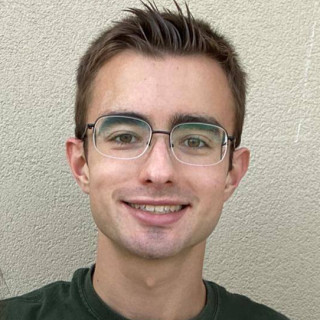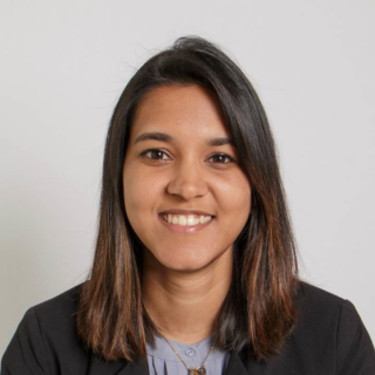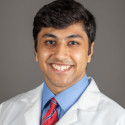The drive from my university’s medical center to our student-run free clinic is a short one, but one that takes you through an area of my city that has seen better days. Dilapidated and abandoned houses, a derelict steel mill with collapsing exterior walls, and boarded-up businesses surround the clinic. The local government has given up on repaving the streets, and navigating mammoth-sized potholes is a part of the journey. The drive did little to quell my feeling of uneasiness, one brought on by the expectations of intern physicians at the clinic. I would be supervising the medical students, making sure their plan was medically appropriate. It was a level of responsibility I had yet to grow accustomed to, but one that was thrust onto my shoulders as I entered the clinic doors.
My feelings soon dissipated as I entered. A bustle of activity surrounded me, and I was quickly ushered into the physician workroom. A student approached me with an aura of authority. “Dr. Shiver, is this your first time? Let me show you around.” The clinic’s lackluster exterior hid its inner workings exceptionally well. Preclinical students checked patients in and checked vitals in a triage area. Fully stocked examining rooms lined the hallways. A functioning laboratory ran urinalyses and point-of-care lab tests. An ECG machine and point-of-care ultrasounds stood ready for use, and radiology residents had commandeered one of the examining rooms. A storage closet held a wealth of reproductive health supplies, vaccinations, and cancer screening equipment. As I took it all in, my tour guide volunteered, “We also have dentistry today, so if a patient needs a dentist, just send them across the hall.”
The tour ended in the back of the clinic. Teams of medical students sat in clusters, diligently reviewing patients’ medical records. Pharmacy students sat nearby, reviewing the free medications we had on formulary that patients could be switched to. Public health colleagues pre-prepared applications for our hospital’s financial assistance program for the day’s patients. The clinic doors were a portal into a different world, a world that so starkly contrasted with its harsh surroundings.
Before I could find my bearings, third-year medical students started staffing patients with me and the day took off. “This is a 52-year-old woman presenting for HTN and recurrent abdominal pain ...”
I nodded along and soon headed into the examining room with a group of students in tow. I guided the students through a focused abdominal examination as I ran differentials through my head. Her abdominal complaints lacked red flags and were nonspecific, and her exam was completely benign. The diagnostic tools that were readily available, however, exceeded ones I had in my resident clinic. A urinalysis checked for stigmata of UTI, an ultrasound assessed her abdomen and pelvis, looking for pathology such as cholelithiasis, a FIT test checked for GI bleeding, and a CBC assessed for leukocytosis. By the end of the visit, I felt comfortable making a preliminary diagnosis of functional abdominal pain, and our pharmacy team was able to provide an SSRI.
I remember the feeling of awe driving away from the clinic that day. It was far and away more than I expected. It felt too good to be true. A freestanding clinic, one that truly offered comprehensive medical care and medications without charging patients a dime. It was a service not only to the patients seen but also to the individuals who ran the clinic. Everyone had a role. Preclinical students shadowed the clinical students, who presented the patient case to the resident. Students were the phlebotomists, the ECG techs, the lab techs, and the triage staff. It was a well-oiled machine, one made possible due to the culmination of years of hard work by others, people who sought to make a difference for the uninsured in their community.
It’s this very environment that makes my medical school’s free clinic so important. For many students, the free clinic is their first exposure to taking care of others. A safe environment, where they can be a part of a robust team providing high-value care. An atmosphere that instills within them the altruistic nature of medicine, one where the term “relative value unit” does not exist. It’s this perspective on health care that students are able to experience and hopefully carry into their professional careers.
The Jackson Free Clinic serves as a case study for the good that can be done when the right group of individuals receives the funding necessary to improve the health of a community. Medical students, unencumbered by our current health care system, come in optimistic and hopeful that they can make a difference. When given the chance, they can.
Student-run free clinics are common throughout the U.S., but funding these clinics is often a challenge. The federal government should appropriate more grant funding to supporting these free clinics. Providing grants for student-run clinics throughout the U.S. would account for only a minuscule amount of federal health care expenditures but could significantly impact the way budding medical professionals view medicine. We should advocate for the establishment of more of these grants. These funds could be designated specifically for improving community health via delivery of health care and available only to medical trainees. These funds would allow the patient to receive lifesaving medical care and allow the student to experience health care in a different light. A light that they can carry forward, into their residency and future.
What are your thoughts on student-run free clinics? Share in the comments.
Dr. Lachlan Shiver is a resident physician at University of Mississippi Medical Center. His interests include neurological research, medical humanities, and running. He has been a Doximity Op-Med Fellow since 2022.
Views and opinions expressed do not necessarily represent the author’s employer/residency program.
Image by Denis Novikov / Getty







